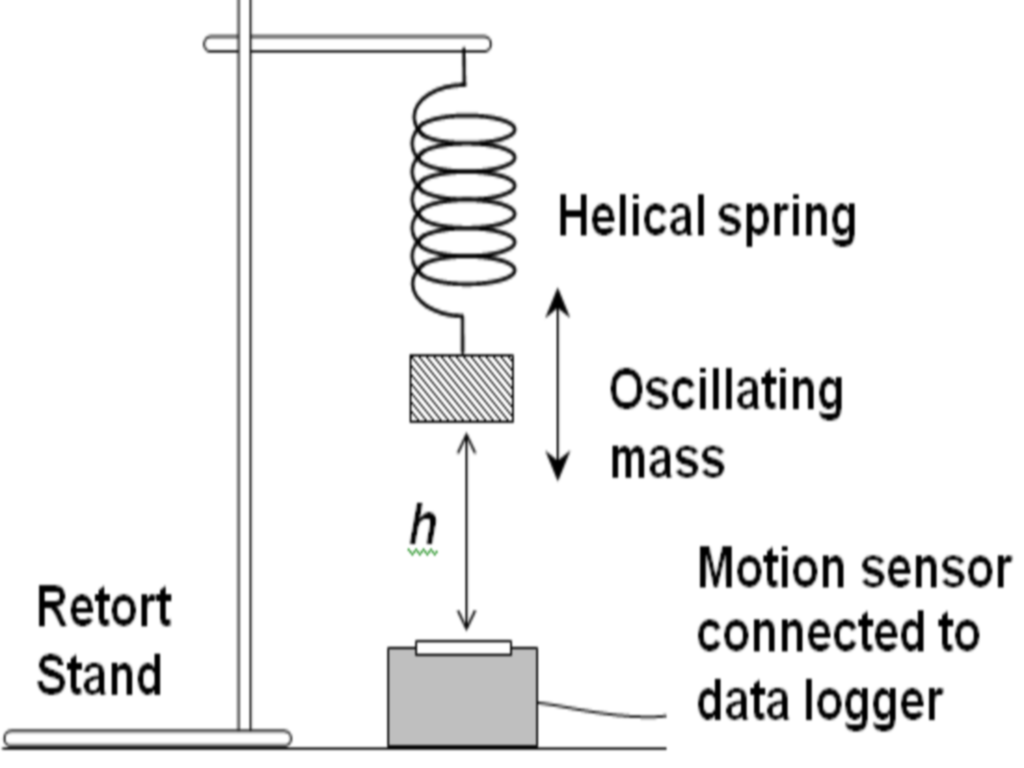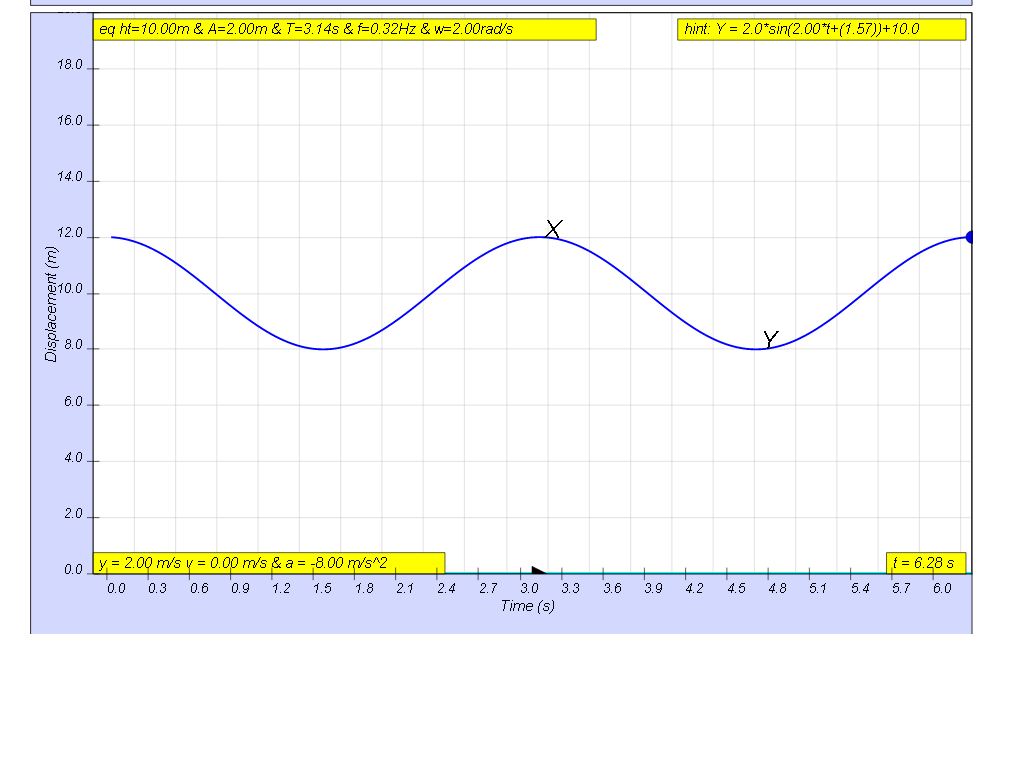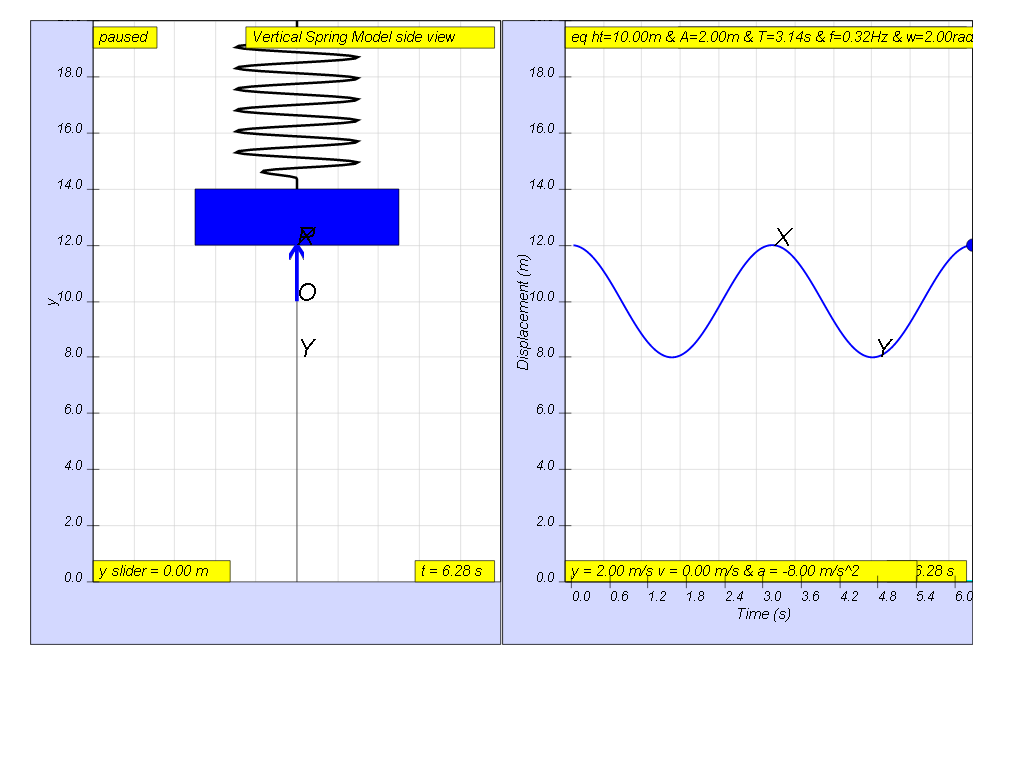
Here is an
illustration of how the oscillation of a basic spring-mass system
can be investigated using motion sensor.

Example of data collected is shown

Information of the oscillation can be drawn from Fig. 13.14 as
follows:
[ 10.0 m , 2.0 m , 3.14 s , 0.32 Hz, 2.00 rad/s, +1.0 m)

http://dl.dropboxusercontent.com/u/44365627/lookangEJSworkspace/export/ejss_model_SHM06/SHM06_Simulation.xhtml
Q1: setup the model to represent the conditions in the example
hint: select sensor?, y = 2.0m, k = 4 N/m etc.
Q2: setup the model with different conditions of your choice and recalculate the point 1 to 6.
Q3: a student suggests that the conditions of getting the same period of T = 3.14 s is to ensure the following equation is valid.
collect some data on your own, to verify this claim by this student. Suggest with reasons, whether the claim is supported by the evidences you can collect from the model.